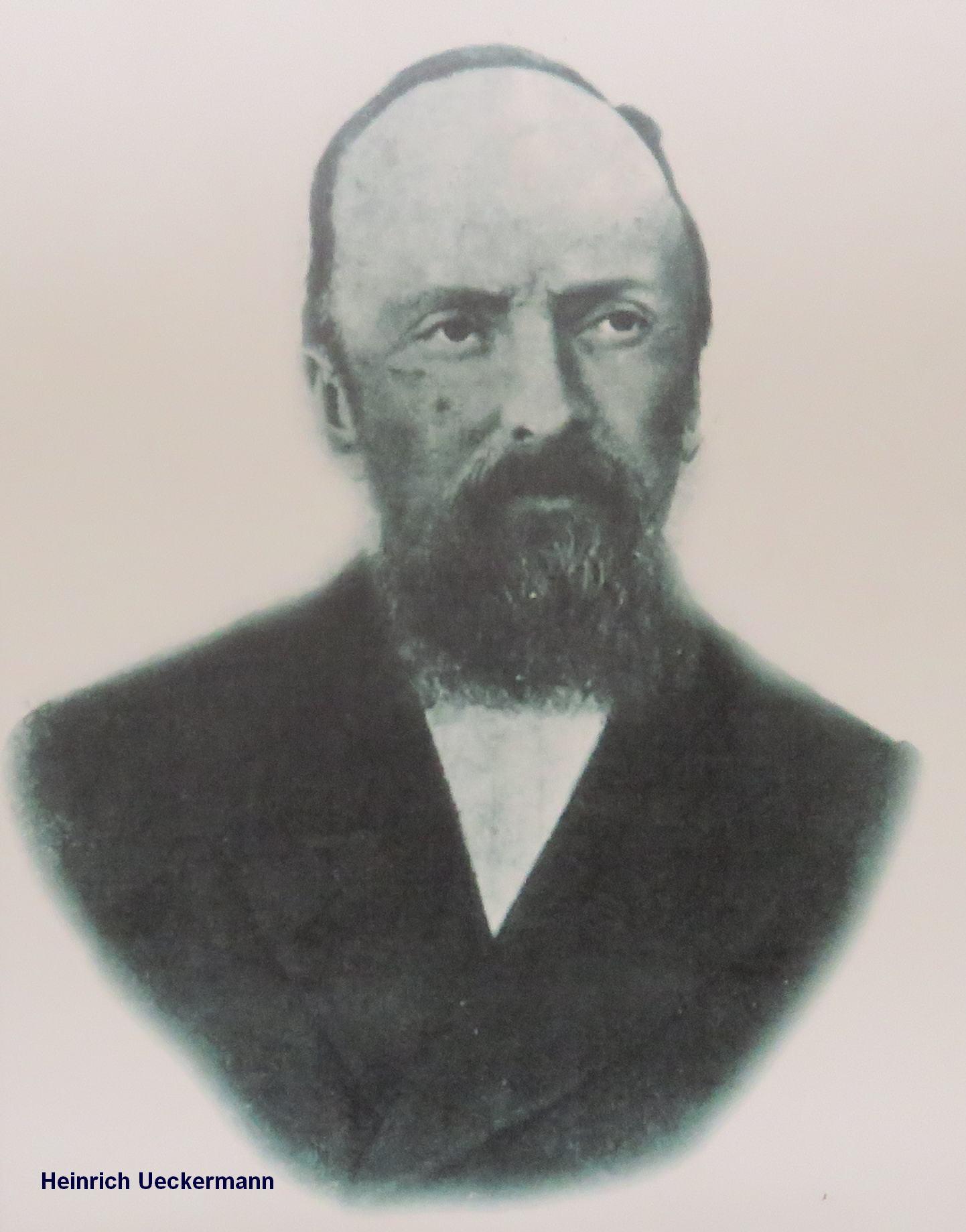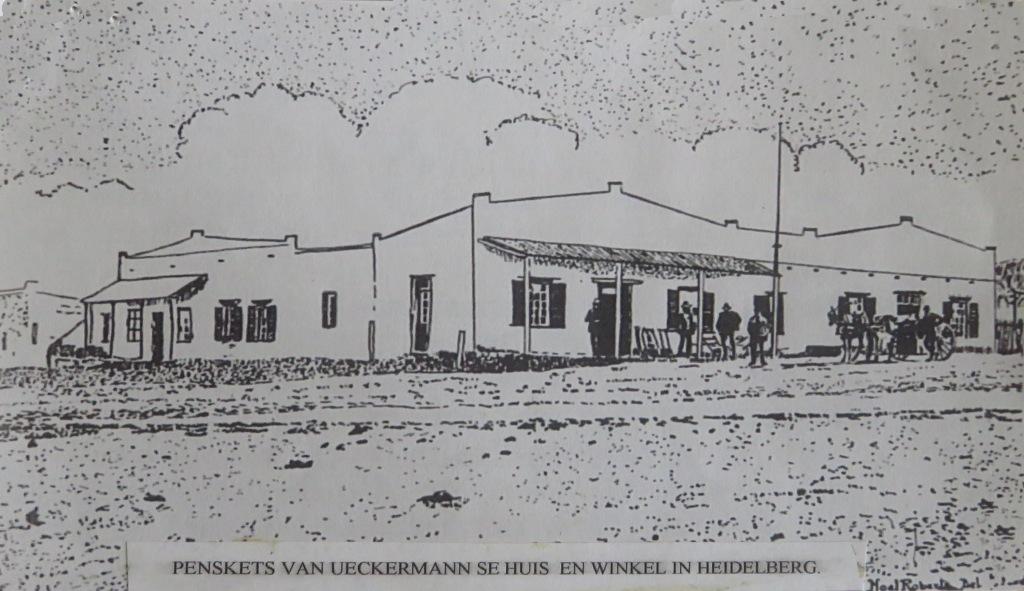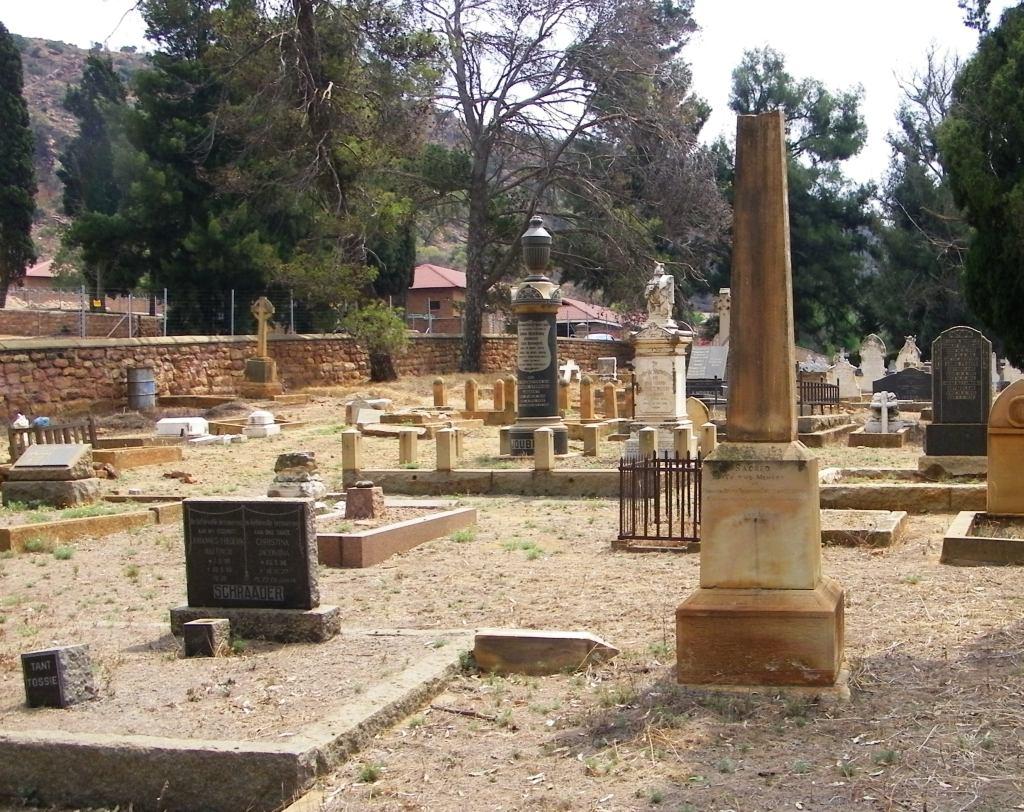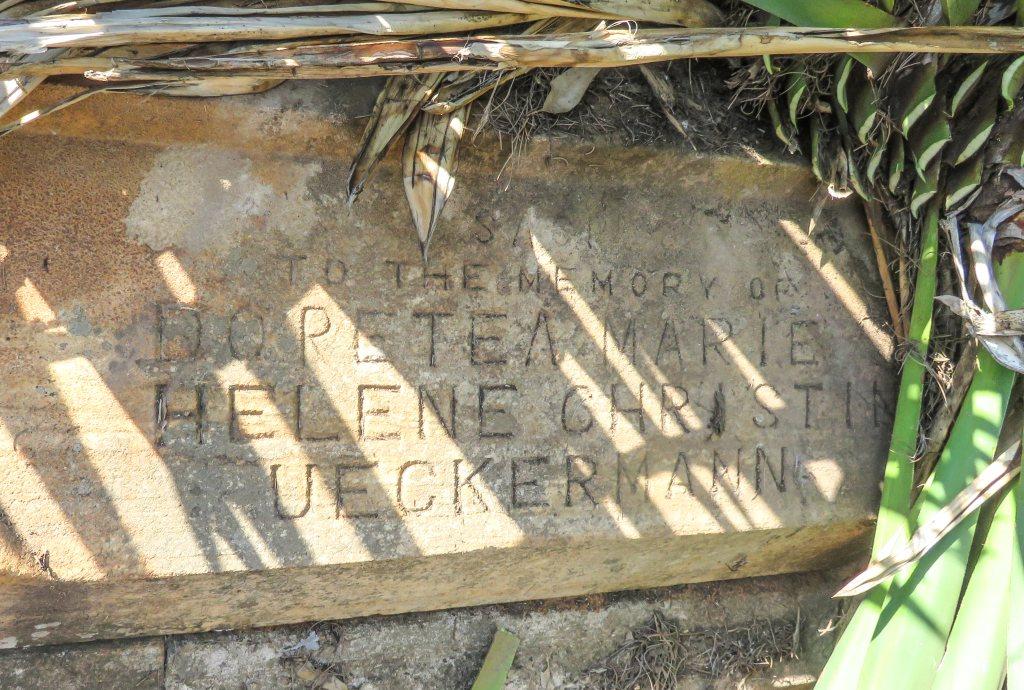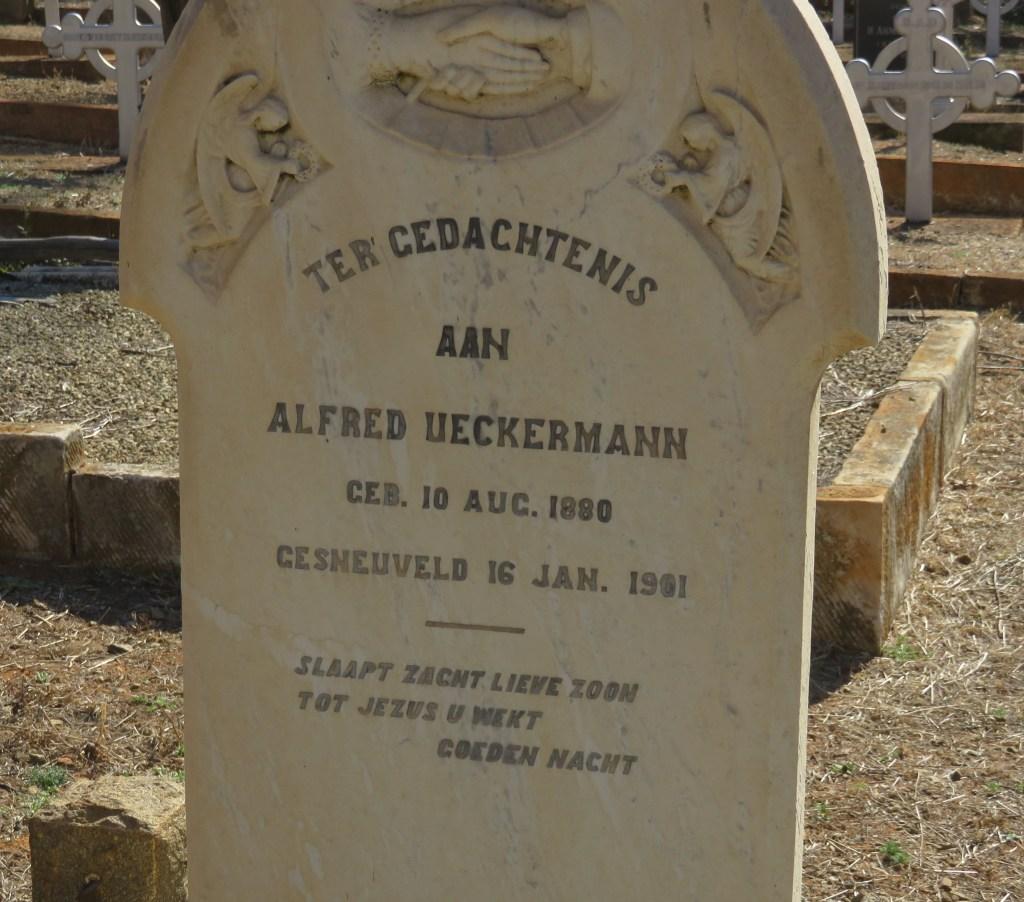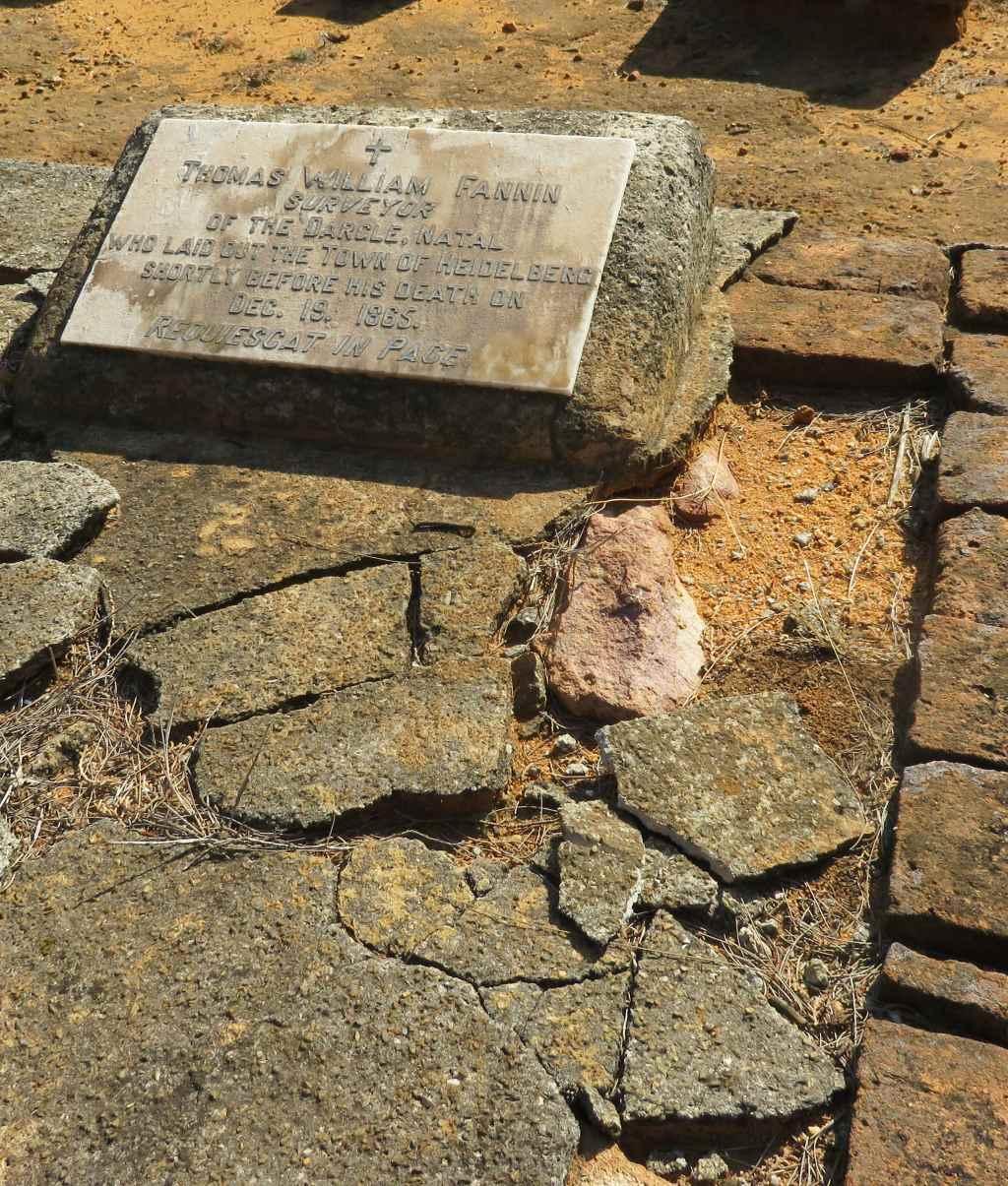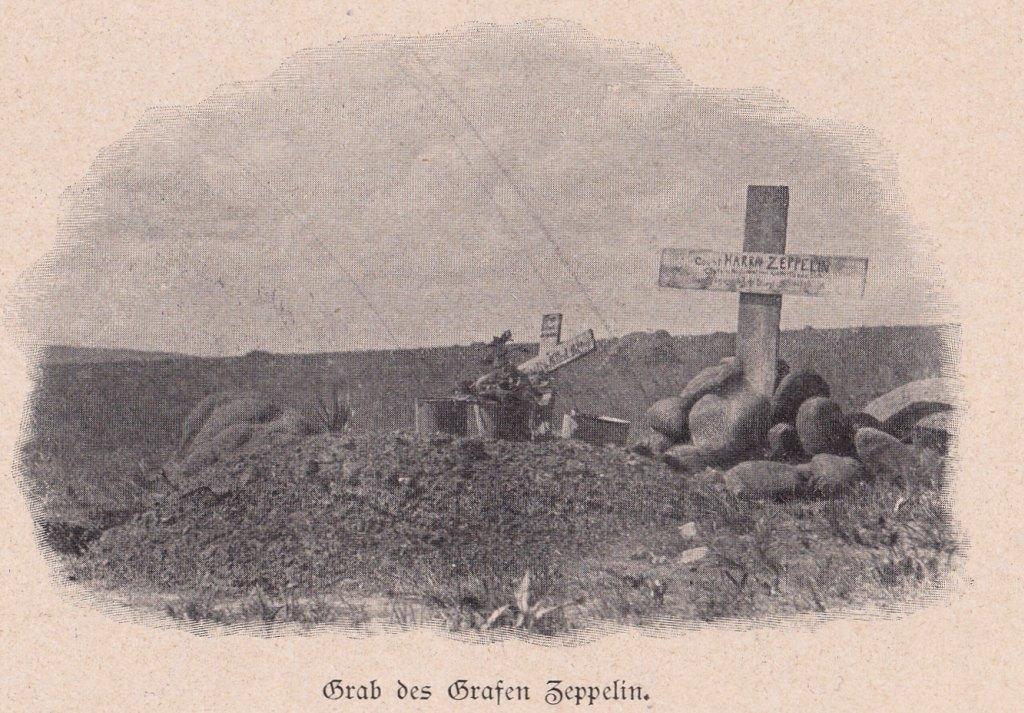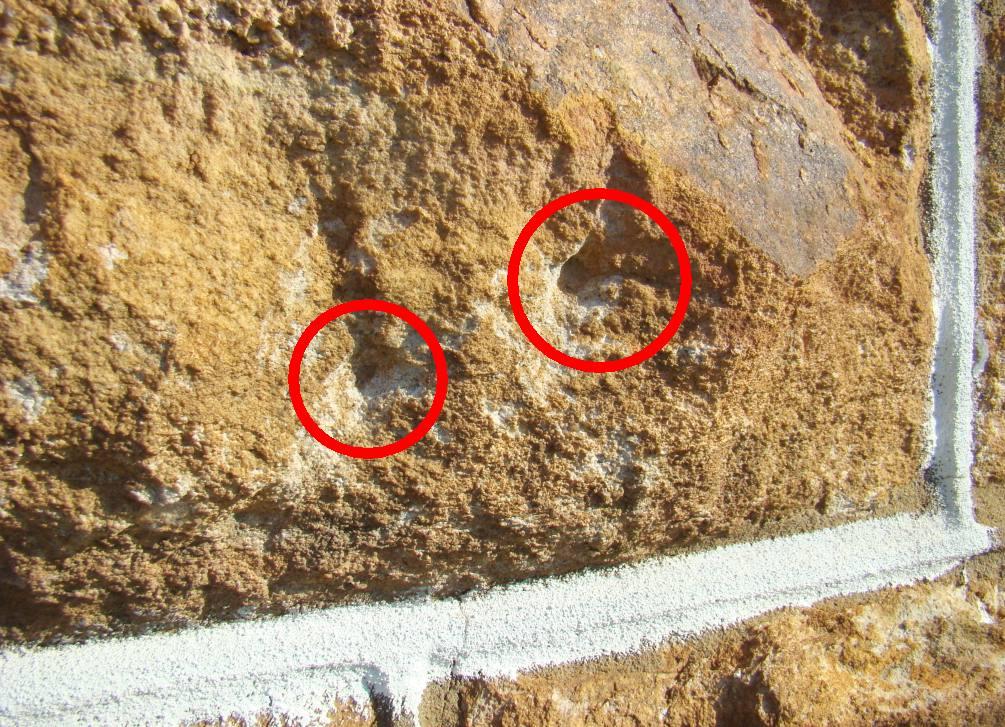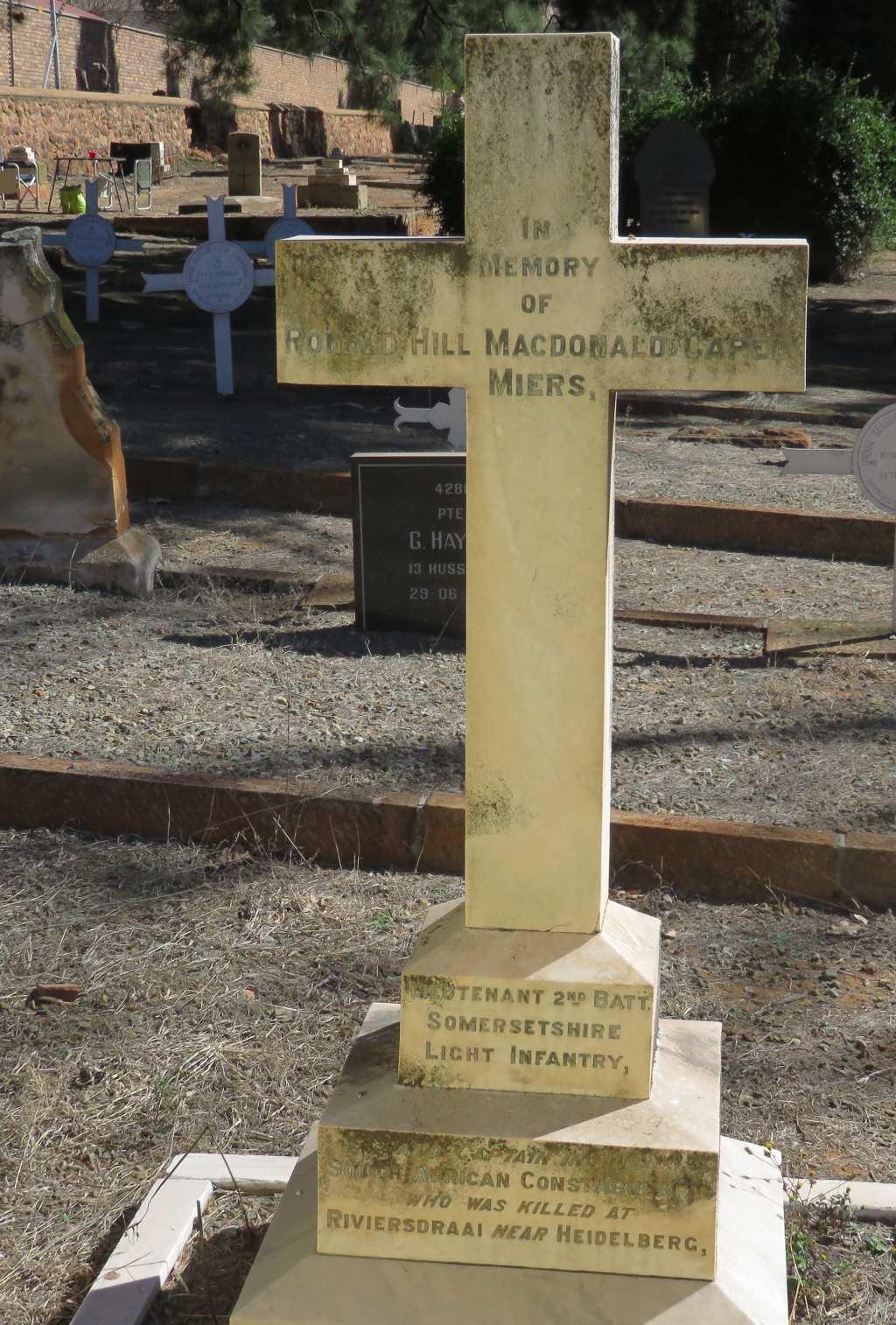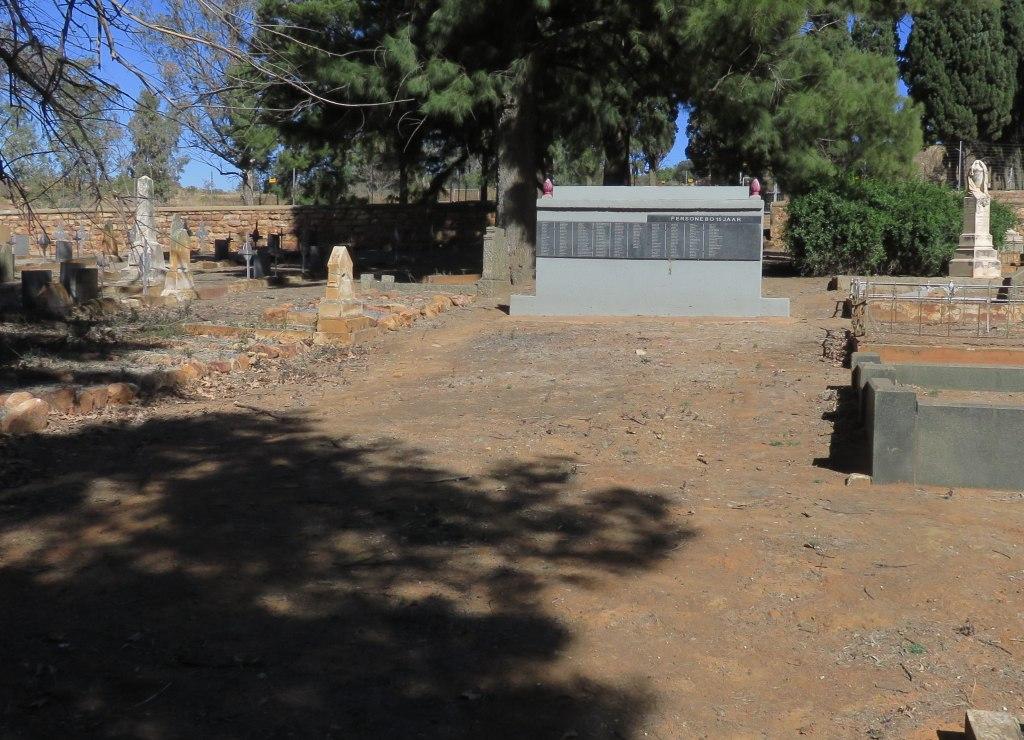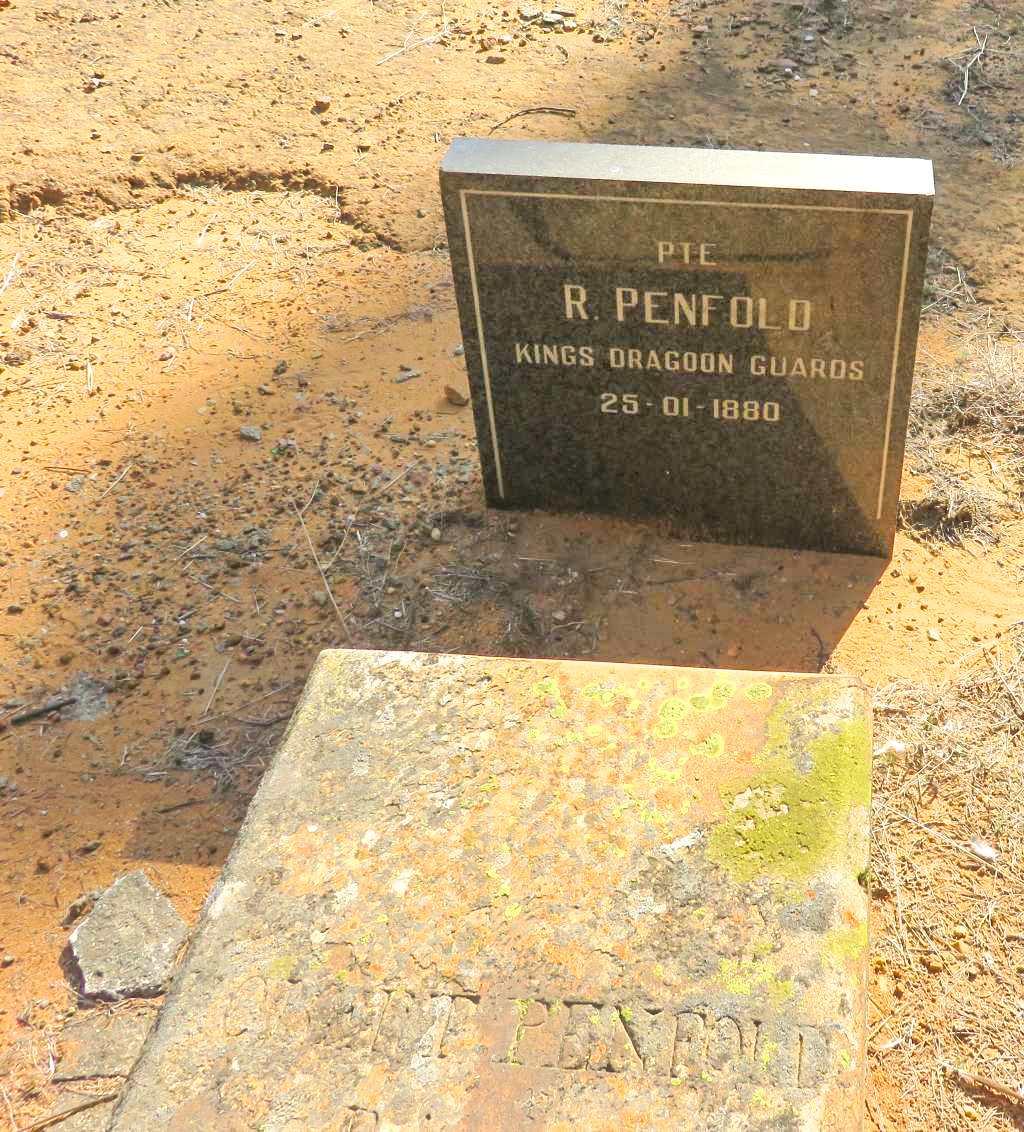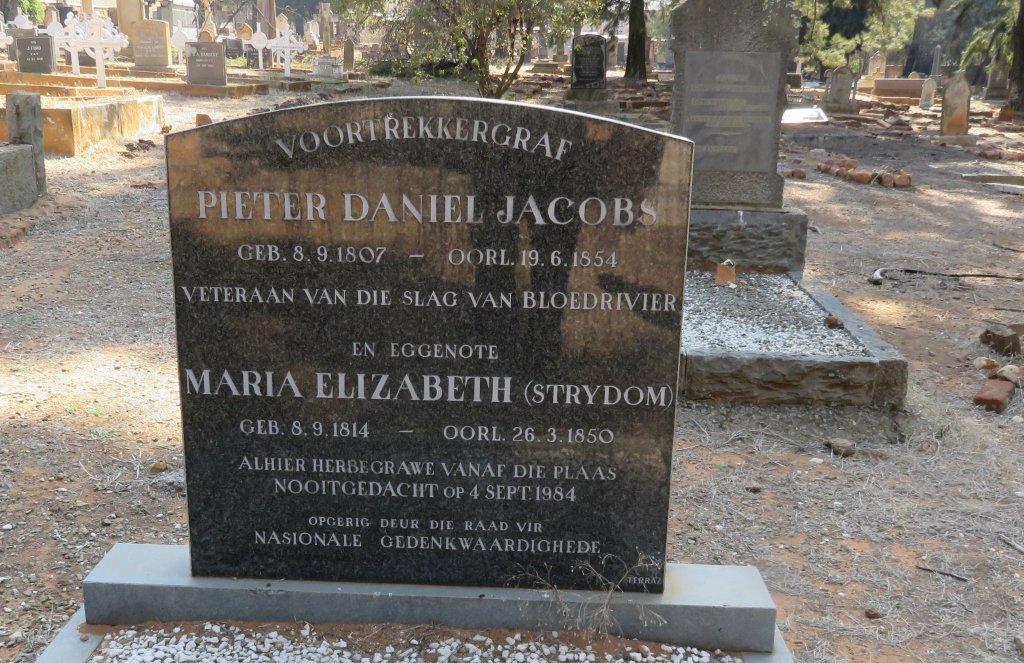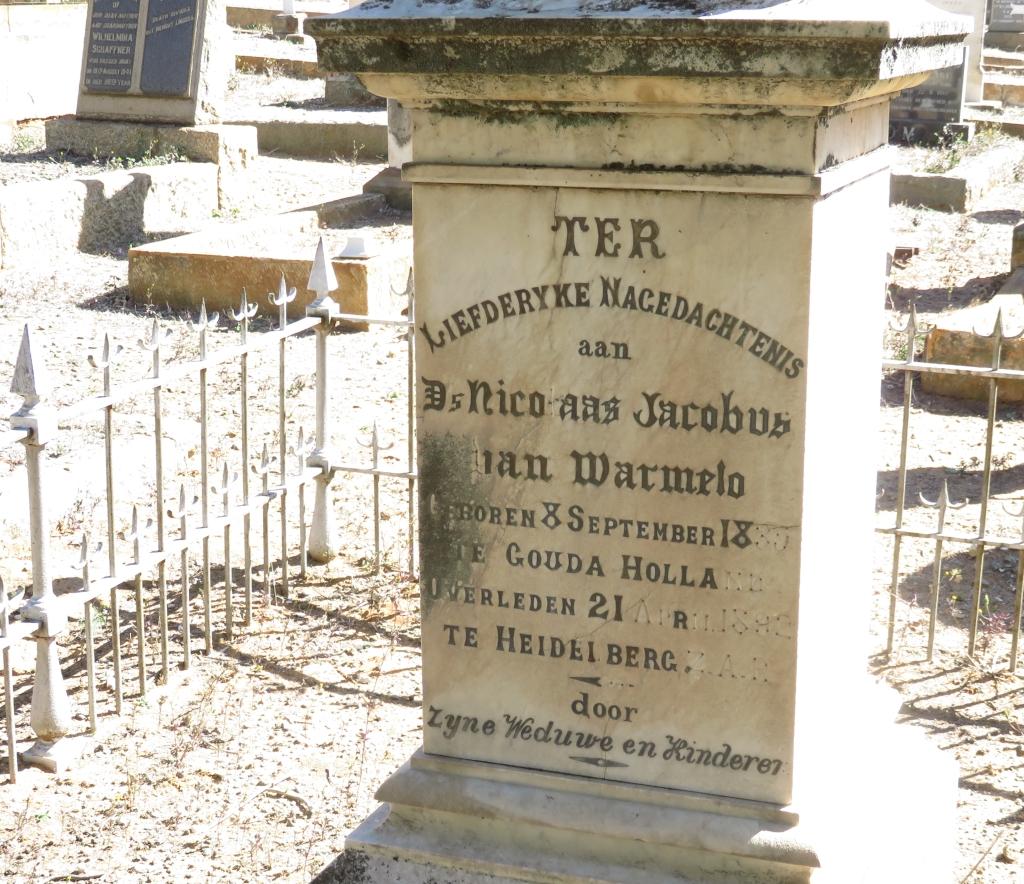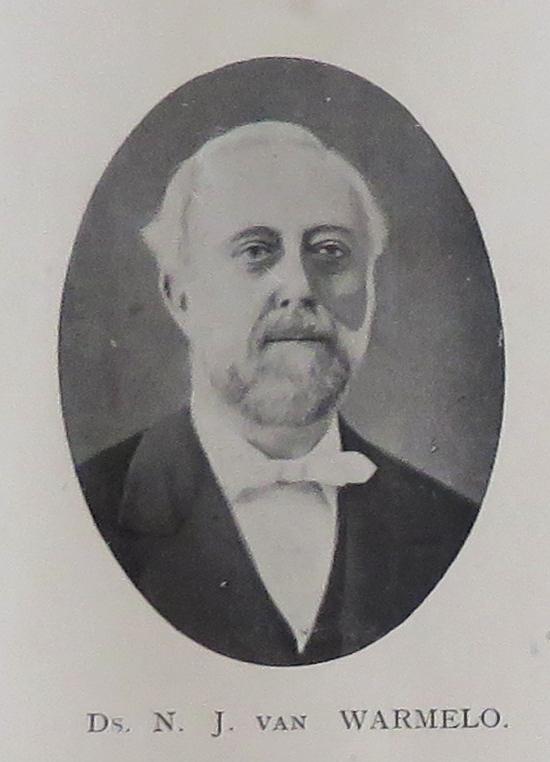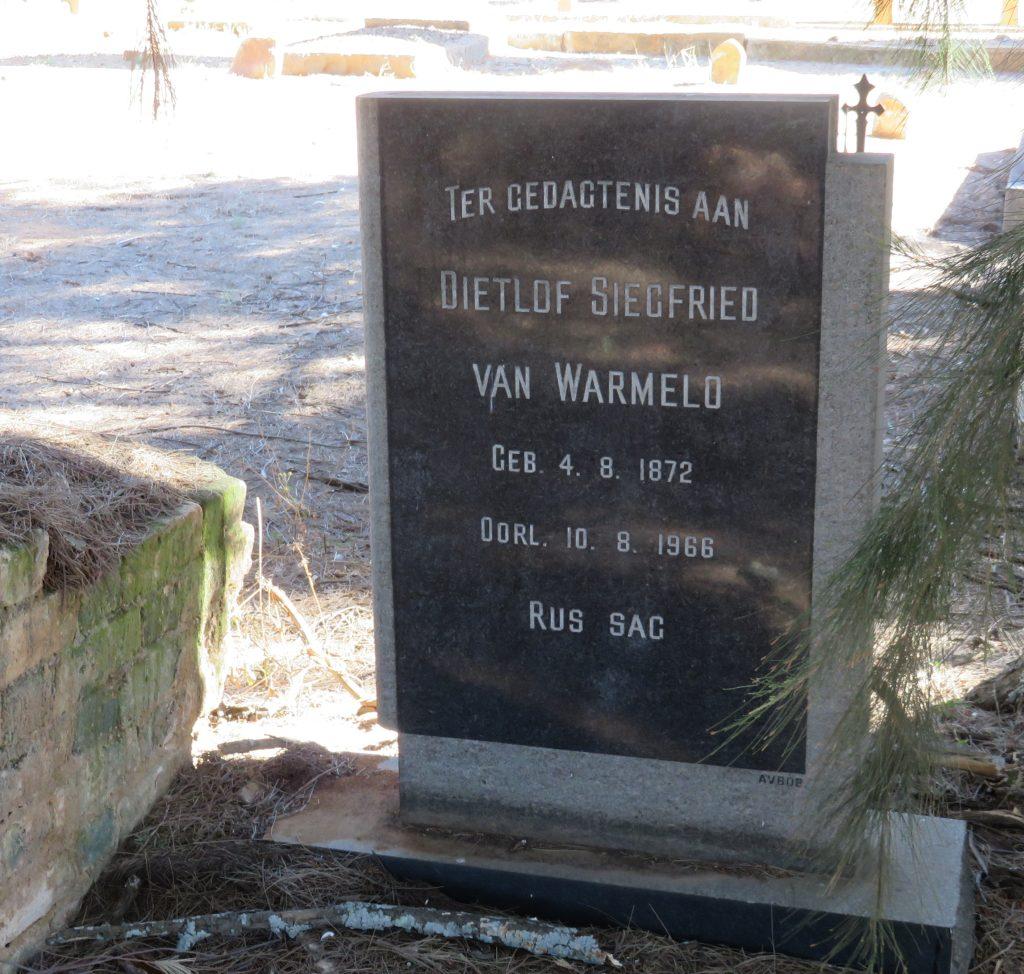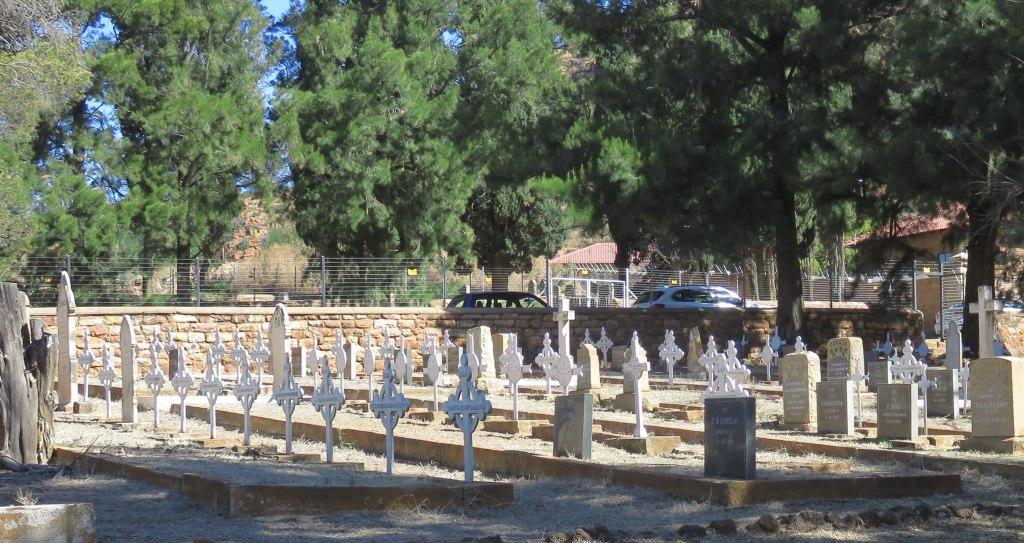
Disclaimer: Any views expressed by individuals and organisations are their own and do not in any way represent the views of The Heritage Portal. If you find any mistakes or historical inaccuracies, please contact the editor.
Beautifully situated in the Heidelberg Kloof is the Kloof cemetery, the original and oldest cemetery of the town. In fact, the oldest grave goes back to before the town was established. I'd like to take you on a walk through the graves, picking up a specific grave stone here and there.
Heinrich Ueckermann
The town started with Heinrich Ueckermann, he set up the first trading store in what now is the town.
Heinrich Ueckermann
He originated from Germany and named the place after Heidelberg in Germany where he studied (the sources don't reveal what he studied). He arrived in South Africa in 1849, disembarking in Durban. He set up business in Pietermaritzburg and two years later got married to Elizabeth Mary Mason. She bore him 14 children.
After the birth of their first son, they trekked extensively by ox-wagon into the interior as far as the Soutpanberge. It was on this trek that their first daughter was born in 1856 (a personal note: it is always an amazement to me how tough people were in those days that they could trek for months on end and have babies at the same time). On another trek he got to the farm Langlaagte and decided that this was a good place to establish a trading store thus bringing an end to their wanderings.
From the farmers Strydom and Venter he purchased a piece of land to set up a trading store. This piece of land still exists as stand no.92 on the corner of Ueckermann and Kerk Street. The picture below shows the trading store in the early days.
Ueckermann Trading Store
On his initiative a town was laid out and proclaimed.
His business was obviously successful and he became a respected citizen of the town. He represented Heidelberg in the Volksraad (Parliament) and was a member of the executive (uitvoerende raad). In business he not only had the shop, he also opened a chemist (which gave rise to the thought he may have studied pharmacology in Germany) and became a building contractor. He was also a member and the secretary of the Nederduits Herformde Kerk and it was under his supervision that the first church was built in 1864/65.
The Grave of Heinrich Ueckermann
The inscription on the gravestone reads:
Sacred to the Memory of
Heinrich Julius Friedrich Christian Ueckermann
Born in Mecklenburg Germany
20th July 1827
Died 24th July 1883
A note: Mecklenburg is not a town or a place, it's a state in the Federal Republic of Germany. His exact place of birth is Schwerin, one of the major towns in Mecklenburg.
On the side of the gravestone it says:
Erected
to the loving memory
of the founder of Heidelberg
by his sons
DMHC Ueckermann
Near the bottom of the cemetery, towards town, is a grave completely overgrown by a Yucca tree. With its spiky leaves it protects the grave plate very well, protecting against the weather and erosion and also against humans. Moving a couple of leaves I got a glimpse of the name Ueckermann, and that really set me going. I had a difficult job getting to the inscriptions.
Inscription
On the one side the inscription says:
SACP
To the memory of
DORETEA MARIE
HELENE CHRISTINE
UECKERMANN
And on the other side it says:
BORN WOHLITZ
AT STERNBERG
(MEC)KLENBURG SCHWERIN
13 JULY 1806
DIED 30 NOV 1870
REST IN PEACE
The three letters in brackets are not visible and have been assumed.
Searching through my sources I came to the conclusion that this was the mother of Heinrich. The background to this is that there was another Ueckermann in the district, it was Carl August Friedrich, a brother of Heinrich. He joined Heinrich later in Heidelberg and was the first public prosecutor and later a Justice of the Peace. Carl was Heinrich's junior by 10 years and also made his way to South Africa around 1860. He came with his mother. The sources state her name as Dorethea Marie Helene Caroline and she died in Heidelberg in November 1870.
Alfred Ueckermann
John Alfred Ueckermann died whilst serving with the Heidelberg commando during the Boer War. I have not been able to find out how and why, I'll keep on looking. He was a grandson of Heinrich Ueckermann and son of Frederick Ernest Ueckermann. Frederick was the first child born to Heinrich and Elizabeth in Pietermaritzburg 1851.
Grave of Alfred Ueckermann
Thomas William Fannin
The plaque on this grave states:
Thomas William Fannin
Surveyor
of the Darcle, Natal
who laid out the town of Heidelberg
shortly before his death on
Dec. 19 1865
Requiescat in Pace
The last sentence is Latin and means 'rest in peace'. And I don't know about this place name Darcle, where is it?
TW Fanning was a surveyor from Natal who was moving through the area looking for work. Heinrich Ueckermann gave him the contract to lay out the new town. Unfortunately a severe attack of malaria caused his demise before he could finish the job. During his sickness he was nursed in the Ueckermann house. He was the first person to be buried in the Kloof cemetery.
Fallin Grave
Graf Harra von Zeppelin
On the memorial honoring the fallen comrades of the Heidelberg commando appears this name, Harra von Zeppelin. He was one of the German volunteers who had joined on the side of the Boers.
Heidelberg Commando Memorial
When war became imminent some Germans formed a corp under the command of Oberst (Colonel) Schiel. That unit saw action very early in the war at Elandslaagte, that is a railway station between Ladysmith and Dundee. It was in that battle that the German corp suffered heavy losses and it cost the life of the Graf von Zeppelin. According to witnesses he had received a shot to the head and barely conscious also received a wound when cut by a sabre and stabbed with a lance by the cavalry of the enemy. He survived the night and only died the next day.
He had the rank of an officer and in the few days with the corp became very popular, although he insisted that his fellow comrades address him by his title 'Graf' (Count). I could not find out anything about his life in the Transvaal before he joined the war. He must have lived there since he was with the action from the beginning.
Why his remains were reburied with fighters from the Heidelberg commando I do not know. I cannot find any connection in the literature between the Graf and the Heidelberg commando
Grave of Graf Zeppelin
Salomon van As
Another name on the memorial that drew my attention was that of Salomon van As. Van As was a field cornet during the Boer War as a member of the Heidelberg commando. He was involved in the killing of Captain R.C.H.Miers. The incident occurred during September 1901 at Riversdraai 12 miles south of Heidelberg. Captain Miers approached the Boers under a white flag most likely with the intention to convince them to surrender. What exactly happened is not known. The British claim the Captain was shot in cold blood which makes this a war crime whereas van As claims he acted in self defence.
The British felt so strongly about it that his name came up in the peace conference at Vereeniging as one of three burghers that had to hand themselves over to the British for investigation. He was imprisoned in the Heidelberg jail where the court case took place. Van As was not given the opportunity to call his own witnesses, was found guilty and was condemned to die. The execution took place at the back of the jail, the bullet holes in the wall remain as witnesses to that event.
A few years after that the father of van As received a letter of apology from the British military, admitting that the court case was irregular and thus van As had not received a fair trial, compensation was offered to the family but refused.
Bullet holes in the wall of the jail
British Boer War Graves
There is a large section of war graves for British soldiers killed during the 2nd Anglo Boer War. Most of them are marked with the standard steel crosses and some with proper grave stones.
British War Graves
Here we meet somebody we know from the Salomon van As episode mentioned above: Captain Miers who died as a result of the confrontation with van As. The full inscription reads:
In Memory of
Ronald Hill MacDonald Capel
Miers,
Lieutenant 2nd Batt.
Somersetshire
Light Infantry,
and captain in the
South African Constabulary
was killed at
Riviersdraai near Heidelberg,
on 25st September 1901.
Gravestone of Captain Miers
Concentration Camp Graves
Concentration camps for the families of the Boers fighting in the Anglo Boer war were established in many places in the country. What has been left behind from the concentration camps at Heidelberg are the graves of the mainly women and children who died here. There were three camps at Heidelberg, two for the boers and one for blacks.
The graves are in two locations, one at this cemetery, Kloof, and the other location at what is called the camp cemetery. That one is on the way out of town toward Nigel. There should also be some graves from the black camp, the whereabouts of that is not known, at least not to me.
Concentration Camp Graves
Graves from the First Boer War
This is not 100% correct. The graves are marked January/February 1880 which was before hostilities with the Boers commenced. The two gravestones indicate that here lies Pte R.Penfold, Kings Dragoon Guard, 25-01-1880 and Pte L.H.Bradbury, Kings Dragoon Guard, 20-02-1880.
The heading is thus wrong, I couldn't think of anything better. The graves are certainly from the time of the annexation of the Transvaal by the British and the British army was present in the area. Although there was no garrison at Heidelberg, these must have been soldiers passing through or staying in a temporary camp.
Penfold Grave
Pieter Daniel Jacobs
This grave had me a bit confused, because a person of the same name is buried at Goeiehoek not far from here. The name is the same, but the dates differ. The one resting here in Heidelberg is the son of Pieter Daniel at Goeiehoek (click here for details). He came with senior from the Cape in 1838 to fight in the Battle of Blood River. Coming back from the battle, senior settled at Goedverwachting and junior at Nooitgedacht.
Grave of Pieter Daniel Jacobs
Van Warmelo Graves
There are two graves, that I have come across, with the name 'van Warmelo'. The oldest one is that of Nicolaas Jacobus van Warmelo. He came from Holland and initially served the church in the Soutpanberg. He was called to be a minister of the Herformte Kerk in Heidelberg from 1868. From 1885 to his death in 1892 he was the minister for the United Church.
Grave of Nicolaas Jacobus van Warmelo
Dietlof van Warmelo is well known because he wrote a book, 'On Commando', about his time as a Boer soldier during the Boer War. He wrote it whilst imprisoned in India. I like his style of writing which is very down to earth, telling the story the way it was. I can't find anything about his life after the war. He lived to a good old age of 94.
Grave of Dietlof van Warmelo
Writing seems to be in the family, his sister Johanna Brandt, known as Hansie, also wrote a book: 'The Petticoat Commando'. It was a book about the time when she lived with her mother in Pretoria during the war. They acted as secret agents, smuggling messages to Holland under the noses of the British occupation force.
By no means are these all the interesting graves. There is the newer section to the Kloof side of the concentration camp graves. I have not touched that section yet. It does contain the grave of AG Visser, the well known Afrikaans poet and physician who lived in Heidelberg. Also not reported on is the Jewish graveyard, just over the road. This is not accessible, an electric fence and locked gate makes access very difficult. It is a pity, but I do understand why this has to be done.
About the author: Horst originated from Germany many years ago, has spent a life time working for some major chemical companies. Throughout his life he has had an interest in local history and has now in retirement made this his major hobby. He believes in not just doing the exploration and research but to also write down his findings. Check his website www.ruralexploration.co.za.
References
- Standard Encyclopaedia of Southern Africa, 1973
- TV Bulpin, Lost Trails of the Transvaal, Thomas Nelson and Sons, 1965
- Ian Uys, The Heidelbergers of the Boer War, 1981
- E.F.Sandeman, Eight month in an Ox-Wagon, Griffith and Farran, 1880
- "Ons Kerk Album van Hollandsche Kerken en Leeraren", publisher: unknown, printed in the 1920's
- Verbal and written communication from Heinrich Ueckermann, one of the grandsons of the original HJFC Ueckermann and from Anjoret van Niekerk
- The Ueckermann Families in South Africa, privately published by Ludwig Döhne, 2009
- Joseph Kürschner, Die Buren und der Südafrikanische Krieg, Deutscher Kunstverlag,1902
- Dietlof van Warmelo, 'On Commando', Methuen & Co, 1902
- Johanna Brandt, 'The Petticoat Commando', Mills & Boon, 1913
Comments will load below. If for any reason none appear click here for some troubleshooting tips. If you would like to post a comment and need instructions click here.

